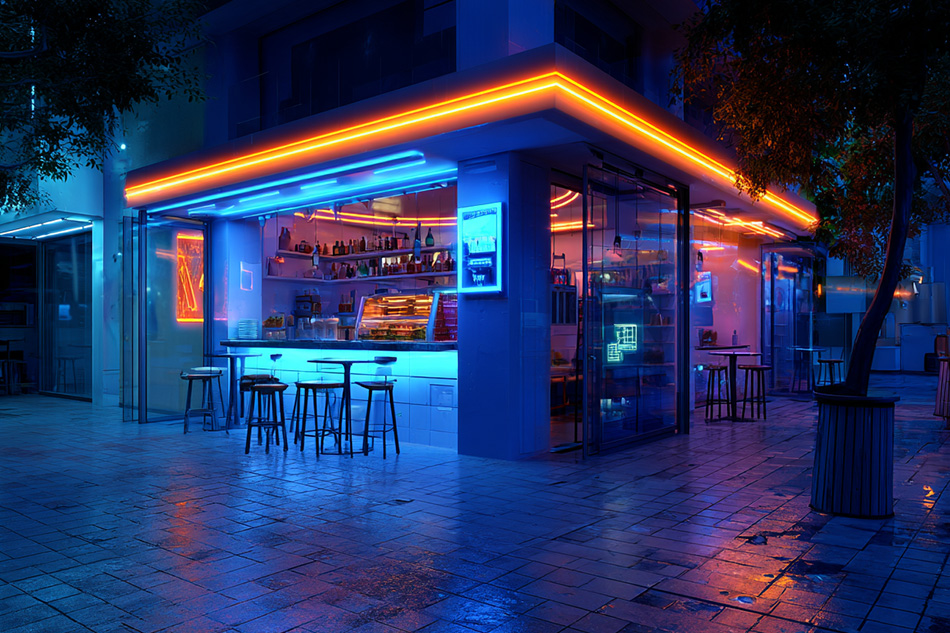Time:2025-06-05
The evolution of lighting technology has reached a pivotal juncture with flex neon light, a solution that combines aesthetic versatility, durability, and eco-conscious innovation. As industries increasingly prioritize sustainability and adaptability, flex neon light is emerging as a critical tool for architects, engineers, and designers aiming to create dynamic, energy-efficient environments. This article explores its technical advancements, novel applications, and transformative potential across sectors.
Technical Innovation: Material Science and Smart Control
Flex neon light’s capabilities stem from breakthroughs in material engineering and intelligent systems:
Self-Healing Polymers: Emerging silicone blends can autonomously repair minor scratches or abrasions, extending product lifespan in high-traffic or outdoor settings.
Biodegradable Tubing: Research into plant-based polymers offers eco-friendly alternatives that decompose safely without sacrificing durability or optical clarity.
Adaptive Optics: Micro-lens arrays within the tubing enhance light diffusion, eliminating hotspots while maintaining brightness uniformity across curved or angular installations.
IoT Integration: Compatibility with 5G and edge computing enables real-time adjustments via cloud platforms, allowing remote management of large-scale installations.

Emerging Applications Beyond Conventional Use
Medical and Surgical Environments
Flex neon light is revolutionizing operating theaters with sterile, shadow-free illumination. Endoscopic tools and surgical headlamps incorporate flexible neon to enhance precision, while UV-resistant variants aid in disinfection protocols without degrading over time.
Agricultural Technology
Vertical farms utilize tunable flex neon light to optimize crop growth. By adjusting spectra to mimic natural sunlight cycles, farmers enhance photosynthesis efficiency for leafy greens and flowering plants, reducing energy waste.
Public Safety Infrastructure
Firefighting gear and emergency vehicles integrate flexible neon strips for high-visibility markings. Waterproof and heat-resistant designs ensure functionality in extreme conditions, from wildfires to flood rescue operations.
Smart Transportation Networks
Adaptive highway signage employs flex neon light to display real-time traffic updates or hazard alerts. Its low glare and high contrast improve driver visibility, reducing accidents in low-light conditions.
Wearable Health Tech
Medical wearables embed ultra-thin neon flex to monitor vital signs through color-coded alerts. For example, a wristband might glow red for elevated heart rates or blue for normal levels, providing intuitive patient feedback.
Sustainability: Core of Modern Design
Flex neon light addresses environmental challenges through:
Energy-Efficient LEDs: Consume minimal power while delivering high luminosity, supporting net-zero goals for commercial and municipal projects.
Circular Economy Models: Modular designs allow components to be disassembled and recycled, reducing landfill waste. Companies are adopting take-back programs to repurpose used materials.
Solar Compatibility: Off-grid installations in rural areas or disaster zones pair flex neon light with photovoltaic panels, enabling sustainable illumination without infrastructure dependency.
Best Practices for Eco-Conscious Implementation
Non-Toxic Adhesives: Use solvent-free bonding agents to minimize environmental impact during installation.
Lifecycle Assessments: Evaluate carbon footprints from production to disposal, opting for suppliers with transparent sustainability certifications.
Localized Production: Source materials regionally to cut transportation emissions and support circular supply chains.
Smart Dimming Systems: Integrate motion sensors or ambient light detectors to reduce energy use during off-peak hours.
Future Trends: Intelligence and Autonomy
AI-Driven Predictive Maintenance: Algorithms analyze usage patterns to preemptively identify failing segments, scheduling repairs before outages occur.
Energy-Harvesting Fabrics: Flexible neon light woven into textiles could power itself via kinetic energy from wearer movement.
Holographic Displays: Merging flex neon with 3D holography for immersive retail or educational environments where light interacts with virtual elements.
Carbon-Neutral Production: Advances in green manufacturing, such as carbon capture during silicone production, aim to achieve net-negative emissions.
Conclusion
Flex neon light is redefining the boundaries of illumination by merging cutting-edge technology with sustainability. Its adaptability across medical, agricultural, and safety applications underscores its role as a catalyst for industry-wide innovation. As global priorities shift toward resilience and eco-consciousness, this technology offers a blueprint for future-ready solutions that are as functional as they are visionary.
For businesses and innovators, investing in flex neon light is not merely adopting a product—it’s embracing a movement toward intelligent, sustainable, and life-enhancing design.